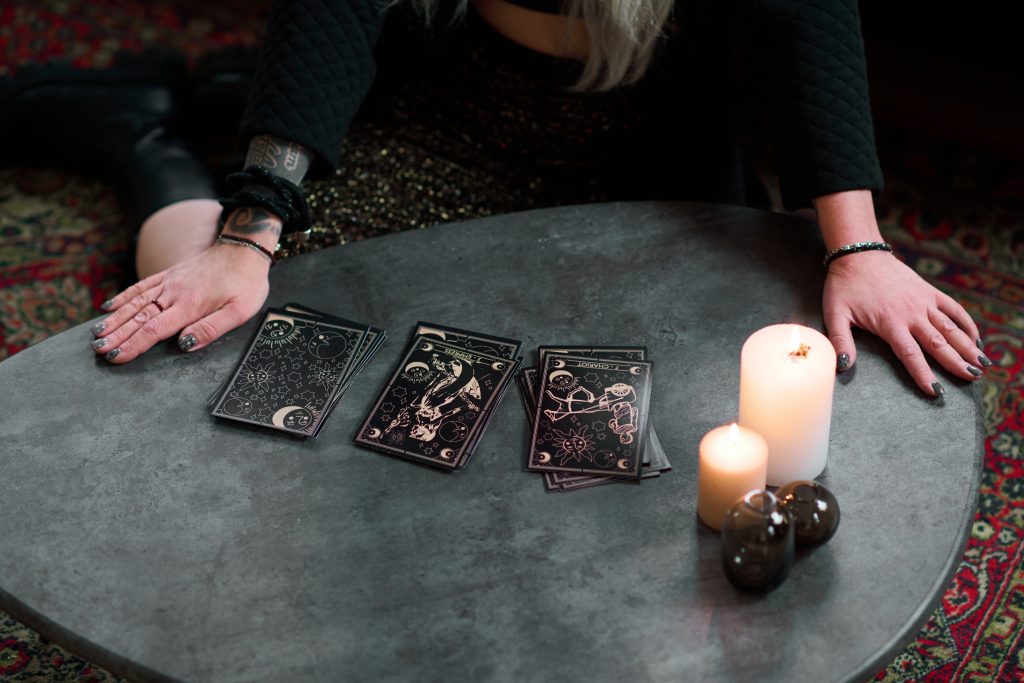The Tarot, an intricate tapestry of symbols, stories, and insights, has captivated seekers of wisdom for centuries. Far beyond a mere divination tool, the Tarot encapsulates a narrative that is deeply embedded in the collective psyche, weaving timeless tales that resonate across ages and cultures.
At the heart of the Tarot deck lie the 78 cards, grouped into the Major and Minor Arcana. The Major Arcana, consisting of 22 cards, chronicles the archetypal journey known as the Fool’s path—a voyage of self-discovery, growth, and enlightenment. These cards, with their iconic symbols such as The Magician, The Empress, and The Hermit, signify life’s major spiritual lessons and transformative experiences.
Each card within the Major Arcana tells a tale, representing a stage in the soul’s journey. The Fool, marked as zero, represents the beginning, a blank slate brimming with potential. As one progresses through the arcana, they encounter challenges (The Tower), introspection (The Hermit), and eventually, completion and enlightenment (The World). These stages mirror our own life experiences, from the uncertainties of youth to the wisdom of maturity.
The Minor Arcana, on the other hand, delves into the day-to-day intricacies of human existence, reflecting our trials, emotions, aspirations, and relationships. Comprising 56 cards divided among four suits—Wands, Cups, Swords, and Pentacles—they capture the myriad nuances of our daily lives. Each suit corresponds to a particular realm: Wands with inspiration and spirit, Cups with emotions and intuition, Swords with thought and conflict, and Pentacles with material realms and earthly matters.
But what makes the Tarot’s tales truly timeless? It’s the universal resonance of its stories. Just as classic myths and legends find relevance in various epochs and cultures, the Tarot’s archetypes reflect shared human experiences and challenges. The Lovers card, for instance, symbolizes not only romantic partnerships but also crucial choices and moral dilemmas. The Death card, often misinterpreted, signifies transitions, ends, and new beginnings, reminding us of the cyclical nature of life.
Historically, the Tarot’s origins are a blend of mystery and lore. Some argue it traces its roots to ancient Egypt, while others link it to the Kabbalah or the Roma gypsies of Europe. Despite its enigmatic beginnings, the Tarot’s influence is undeniable. From Renaissance Europe to modern-day spiritual communities, its tales have been interpreted, reimagined, and embraced, bearing testimony to its universal appeal.
Over time, the Tarot has also evolved, with numerous decks emerging, each reflecting the cultural, artistic, and spiritual sensibilities of its time. From the ethereal imagery of the Rider-Waite-Smith deck to the feminist leanings of the Motherpeace Tarot, every deck adds a unique chapter to the Tarot’s ever-evolving narrative.
In contemporary times, the Tarot’s resurgence in popularity underscores a collective quest for meaning and introspection in a rapidly changing world. As modern seekers grapple with existential questions and spiritual voids, the Tarot offers solace, guidance, and a mirror to one’s inner realm.
In essence, the Tarot’s timeless tales are more than mere cards; they are windows to the soul, signposts on the spiritual journey, and, most importantly, a testament to the shared human experience. In the dance of the arcana, we see our reflections, hear our stories, and find a compass pointing towards our innermost truths.



